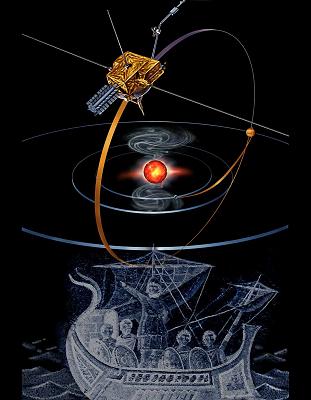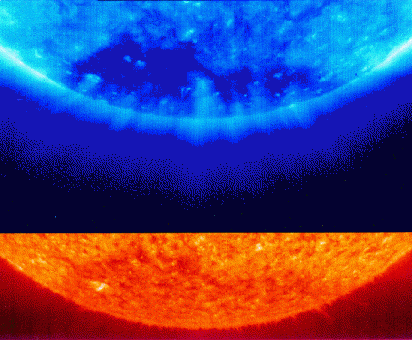The polar regions of the sun are interesting - they have a hole in the corona from which the hot electrons and protons that make up the "solar wind" escape

The sun's south pole is an inaccessible region, says solar physicist Eric Posner of NASA headquarters. "It can hardly be seen from Earth and most of the spacecrafts that study the moon are placed parallel to its equator and they hardly see the high latitudes. Still, one spacecraft managed to pass over the South Pole - Ulysses, shared by NASA and the European Space Agency. On February 7, she made a rare flyby almost over the sun's south pole. In fact it was well past the 80 south latitude. says Posner, the chief scientist on the Ulysses project for NASA.
Physicists studying the sun are excited. Ulysses has passed the Sun's poles only twice so far in 1994/5 and 2000/1. The flight was short but enough to prove that the poles are a strange and interesting place.

The second puzzle is the existence of holes above the sun's poles, the "coronal holes". These are sites where the sun's magnetic field opens up and allows the solar wind to escape. "Flying over the poles, you get a slap in the face from a stream of protons and hot electrons moving at a speed of a million kilometers per hour. Remember - the earth also has a hole in the poles - the hole in the ozone. The chemistry of the ozone hole is not related at all to the magnetic physics of coronal holes, but as Posner says "it is interesting that so many poles seem to have holes".
The third puzzle: the magnetic field of the sun at the poles that allows the solar wind to exit also allows the cosmic rays to enter. Is it possible that the space above the solar poles can be used as a place where interstellar matter can be sampled without leaving the solar system? "This is what we thought before the first crossing over the pole in 1994," said Posner, "but it turned out that we were wrong. Something keeps the cosmic rays out of the polar region of the sun. The current transition gives us an opportunity to investigate the phenomenon.
Fourth mystery: There is evidence from previous transits that there are temperature differences between the south pole and the north pole of the sun. "We are not sure what the reason is," says Posner. "And we are eager to learn if this is still the case. After the current passage over the South Pole, a passage over the North Pole is expected at the beginning of 2008 which will allow us to compare the North and the South.

4 תגובות
Thank you
You are right this time. There is no Wikipedia entry. I will make sure to fill in the gaps as soon as possible. It was launched in 1990.
To Abi Bilovski I am interested in when the spaceship Julius was launched
I searched on wikipedia and did not find it on the science site either